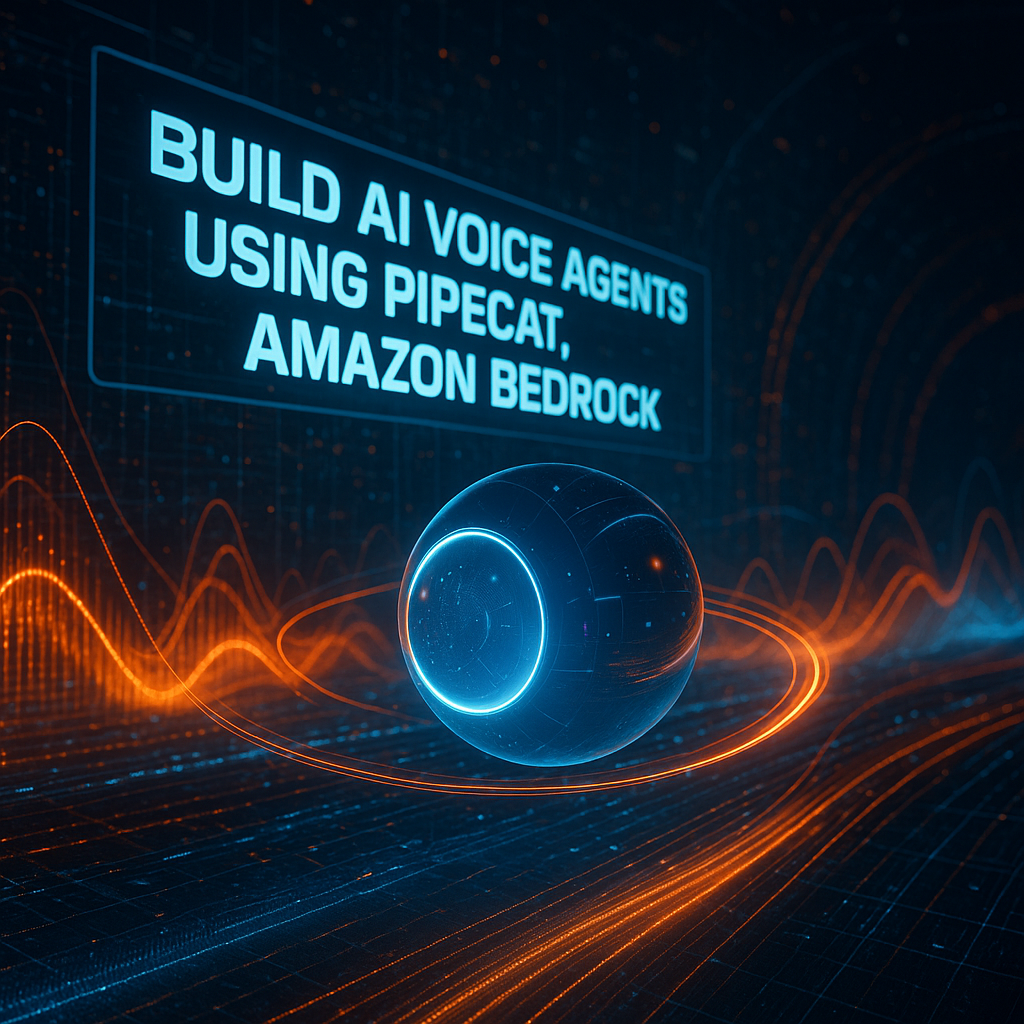
Building intelligent AI voice agents with Pipecat and Amazon Bedrock – Part 1
# Crafting the Future of Interaction: Building Intelligent AI Voice Agents
In the ever-evolving realm of technology, voice AI is revolutionizing how we interact with devices and applications every day. No longer confined to the realms of imagination or science fiction, intelligent AI voice agents are making life more seamless, helping us complete tasks, answer questions, and even perform actions autonomously. But what makes these voice agents truly “intelligent,” and how can one build such sophisticated systems? Using platforms like Pipecat and Amazon Bedrock, the journey is more attainable than ever before.
## The Journey towards Human-Like Voice Interactions
With AI advancing at an unprecedented pace, the development of conversational voice agents has branched into two prominent streams. The first is the **cascaded models** approach, which involves orchestrating a series of architecture components for responsive interaction. The second approach (which we will delve into in future discussions) involves creating speech-to-speech foundation models that unify speech understanding and generation.
### The Cascaded Models Approach
This method involves several key steps:
– **Voice Activity Detection (VAD)**: Using tools like Silero VAD, systems discern when the user is speaking, effectively filtering noise and detecting conversational pauses.
– **Automatic Speech Recognition (ASR)**: Through services like Amazon Transcribe, spoken language converts into text quickly and accurately.
– **Natural Language Understanding (NLU)**: Here, the system determines user intent, utilizing models like Amazon Nova Pro to interpret queries and decide on further actions.
– **Tools Execution and API Integration**: Actions occur through integration with backend services, using frameworks such as Pipecat Flows for efficient operations.
– **Natural Language Generation (NLG)**: The agent fabricates coherent, contextually appropriate responses using technologies such as Amazon Nova Pro.
– **Text-to-Speech (TTS)**: Finally, services like Amazon Polly convert these responses into lifelike speech, creating a natural dialogue flow.
### Common Use Cases
Deploying AI voice agents isn’t limited to just one application but spans various sectors. Here are some impactful examples:
– **Customer Support**: AI voice agents provide around-the-clock assistance, addressing customer queries and directing complex issues to human agents as necessary.
– **Outbound Calling**: Engage with clients through personalized outreach campaigns, book appointments, or follow up on leads using natural dialogue.
– **Virtual Assistants**: Enhance personal productivity by managing tasks and answering questions efficiently.
### Building an AI Voice Agent: Best Practices
Creating an effective AI voice agent involves more than just robust architecture; it also requires attention to practical details:
– **Minimize conversation latency**: Optimizing inference times ensures seamless interactions.
– **Select efficient foundation models**: Aim for models that balance speed and quality.
– **Implement prompt caching**: Enhance speed and cost-efficiency by caching frequent prompts.
– **Deploy natural filler phrases**: Use filler phrases to retain user engagement during intensive operations.
– **Ensure a high-quality audio input pipeline**: Noise suppression and reliable speech recognition are crucial for successful communication.
### A Hands-On Example
One practical feature of these tools is the ability to engage with example implementations. A GitHub repository showcases a sample application using Pipecat with Amazon Bedrock. It incorporates Web Real-time Communication (WebRTC) capabilities to demonstrate a real-world implementation. Initial setup requires prerequisites like Python 3.10+, an AWS account, and API access credentials. Following the steps in the repository, you’ll learn how to bring a sophisticated voice agent to life.
## Learning from the Tools: Harnessing Pipecat and Amazon Bedrock
Integrating frameworks such as Pipecat with Amazon Bedrock allows developers to leverage powerful models and tools without starting from scratch. These platforms streamline the process of building conversational agents, making it easier to focus on crafting engaging, human-like interactions.
This approach allows developers to:
– Quickly iterate on designs.
– Test different NLU and NLG models.
– Optimize both speech recognition and generation.
With the right tools, these architectures transcend simple interaction, becoming valuable components of a larger AI-driven ecosystem.
## Conclusion: Where Will Intelligent AI Voice Agents Take Us?
The development of intelligent AI voice agents marks a pivotal moment in technological advancement. As these systems continue to evolve and grow increasingly nuanced, they hold immense potential to transform industries and everyday life.
This begs the question: **How will AI voice agents continue to redefine our interactions with technology?** As the frameworks become more accessible and refined, developers and organizations have the opportunity to innovate and pioneer new ways of enhancing communication and productivity.
Engage with this technology by experimenting with code samples available on platforms like GitHub, or explore the possibilities further through collaboration with entities like the AWS Generative AI Innovation Center. The future of voice AI is not only promising but open to those willing to explore its potential. How will you use intelligent AI voice agents to transform your world?

